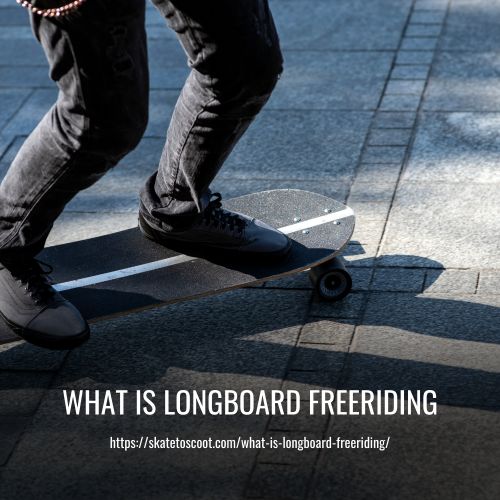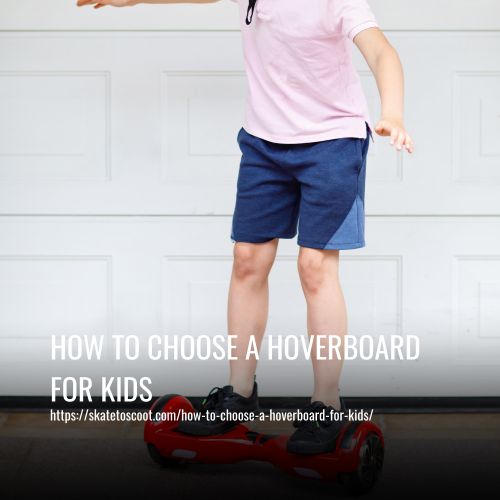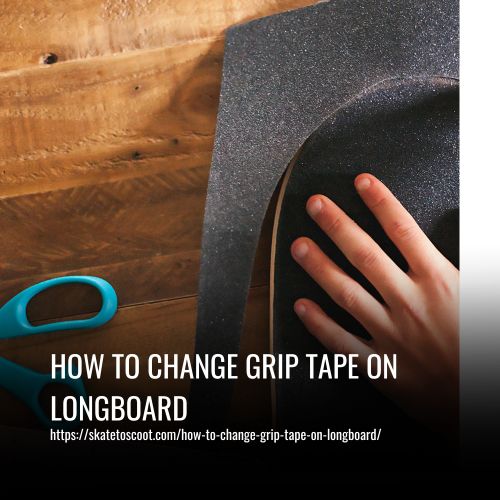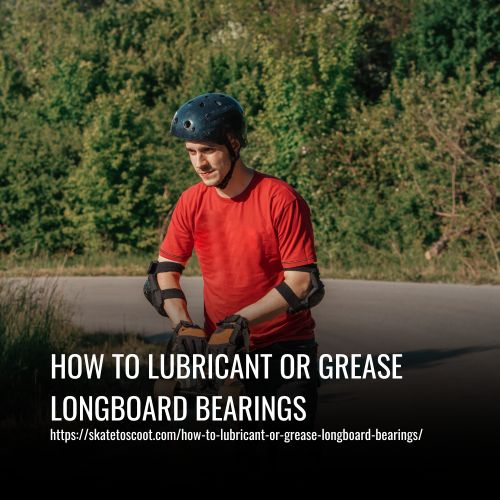As an Amazon Associate we earn from qualifying purchases.
Longboard freeriding is a style of longboarding where riders perform various tricks and maneuvers on their longboards while riding downhill or on flat ground. It involves sliding, drifting, and carving to maintain control and create a fluid and stylish ride.
Freeriders often seek out challenging terrain and use their technical skills to navigate obstacles and perform tricks such as slides, spins, and flips. It is a popular form of expression and creativity within the longboarding community.

Freeride Longboarding: Controlling Speed Through Sliding
Freeride longboarding is a discipline of longboarding that focuses on controlling speed through sliding techniques. It involves performing various slides while riding downhill to not only control speed but also add style to the ride. Sliding is a fundamental aspect of freeride longboarding and is used as both a means of control and as a goal in itself.
Here are some common types of slides used in freeride longboarding:
- Stand-up slide: This is the most basic type of slide where riders push the longboard sideways, extend their legs, and shift their weight backward to initiate a slide.
- 180 slide: Similar to a stand-up slide, but followed by a 180-degree turn. After pushing the board 90 degrees to slide, riders push it an additional 90 degrees to switch their stance.
- Speed check: In this slide, riders push the board into a slide by either pushing forward with their back foot heel (heelside) or pushing backward with their back foot toes (toeside). After sliding, they push the board back into its normal rolling direction.
- Coleman slide: This slide involves leaning so much that riders touch the road and place their hand on it using a slide glove as they turn 90 degrees into the slide.
- Sitdown check: Similar to the Coleman slide, but without placing a hand on the ground. After pushing the board into the slide, riders crouch facing downhill, almost sitting on the board.
- Pendulum: During this slide, riders put their hand down and swing the board across their body past a 90-degree angle with the road, riding backward for a moment before sliding back into the normal forward-facing direction.
- Drifting: Drifting is a technique where riders shift their weight between a normal riding stance and a slide stance to achieve controlled speed. It is often used for controlled turns in corners, and pre-drifting involves doing a light drift before a sharp turn.
By mastering these sliding techniques, freeride longboarders can effectively control their speed while adding flair and style to their ride. It is important for riders to wear protective gear such as slide gloves, pads, and helmets to ensure safety during freeride longboarding sessions.
Getting Started In Freeride Longboarding
If you’re just getting into longboarding or have been longboarding for transportation or just cruising around, you already have the basics down in terms of balancing and steering. But if your next goal is to get speed and ride down steeper hills, you first need to learn how to stop! Foot braking will only take you so far, to ride downhill you really need to learn to slide.
One way to familiarize yourself with weight shifting for speed control is to practice carving, i.e. successive turns performed by shifting your body weight into your toes and then ankles, pushing hard into the board rail for deep turns. When you’re carving, you’re just one step away from sliding – there are times when you end up actually sliding a bit as you lean deep into a turn.
Once you’re comfortable performing the S-shaped carves, you can start experimenting with gentle stand-up slides on a mild slope, since by now you have some grasp of how to shift your weight from rail to rail. Start practicing soft heelside stand-up sliding, by quickly turning your board sideways across the slope while at speed, and pushing both legs out to get the board drifting.
What Makes A Good Freeride Longboard?
When it comes to freeride longboarding, the right equipment can make all the difference. Whether you’re a beginner or an advanced rider, here are some key factors to consider when choosing a freeride longboard.
- Freeride Deck Shape: A good freeride longboard typically has a symmetrical (bi-directional) shape, allowing for easy spinning and riding in both directions. Some boards may also have kicktails, which can add versatility for freestyle tricks. Beginners often prefer longer decks (between 38″ and 42″ in length) for added stability, while more experienced riders may opt for shorter decks for increased agility.
- Freeride Mount Style: Freeride longboards can come in different mount styles, including drop-through, drop platform, or top mount. For beginners, a drop-through deck is recommended as it provides a lower center of gravity and increased stability, making it easier to start sliding. Intermediate riders may prefer drop-platform decks, which are thinner and lighter for easier sliding. Advanced riders often choose top mount decks for better grip and control, although they require more skill to slide on.
- Popular Freeride Longboards: There are several popular freeride longboards on the market. The Landyachtz SwitchBlade is a highly regarded double-drop platform board that provides a stable and versatile riding experience. Other recommended options include the Rayne Vendetta and the Landyachtz Nine to Five, both of which are drop-through decks. For those who prefer top mount decks, the Comet Grease Hammer is a reliable choice.
- Freeride Deck Profile: When selecting a freeride longboard, consider the deck profile. Look for a deck with a strong amount of concave, which provides secure foot placement and foot lock-in. Beginners may prefer a simpler concave (such as radial) to avoid any hindrance while practicing. Additionally, decks with more rocker (curvature along the length) can make it easier and more stable to initiate slides.
Overall, finding the right freeride longboard involves considering factors such as deck shape, mount style, popular options, and deck profile. By choosing the appropriate board for your skill level and riding style, you can enhance your freeriding experience and take your skills to new heights.
What’s The Best Freeride/slide Setup?
When it comes to finding the best freeride/slide setup, there are a few key elements to consider. The aim is to create a setup that makes sliding easy, controllable, and fun.
First and foremost, choosing the right wheels is crucial. Opt for big, soft wheels with radiused edges. These wheels provide better traction and a smoother slide. Additionally, a stiff deck with a generous amount of concave is important for secure foot placement and control during slides.
Beyond that, there are a few factors to customize based on personal preference. Consider your desired wheelbase – longer wheelbases offer more stability at high speeds, while shorter wheelbases allow for easier slide initiation. You’ll also need to decide between a drop-through or top mount setup, as well as the type of concave that suits your riding style.
Dedicated Freeride Longboard
Dedicated freeride longboards are designed for riders who prioritize high-speed and big skids. These boards typically have a drop-through or drop-down deck, which provides more stability and easier slide initiation. Alternatively, riders can opt for a top mount setup for better control and a more responsive feel.
When it comes to the deck, a slightly longer wheelbase is preferred for increased speed and more predictable slides. The deck should also have a stiffer construction, making it easier to control slides. Aggressive concave is important as it helps lock the rider’s feet in place, providing added security during slides.
Choosing the right wheels is crucial for freeride longboarding. Wheels between 65 and 72mm are recommended, with rounded or beveled edges for an easy and predictable slide. Big, soft wheels with radiused edges offer better traction and a smoother slide.
Hybrid – With A Nose/tail
Hybrid longboards with a nose and tail offer a fusion of street, ramp, and hill skating. These boards are essentially larger skateboards, allowing riders to explore a wider range of tricks and maneuvers.
The shorter wheelbase of a hybrid longboard translates to increased responsiveness, a snappier slide, and less stability. This setup is recommended for more advanced sliders who are seeking a quicker and more nimble ride.
The addition of a kick tail and nose opens up a world of possibilities, enabling riders to perform ollies in the middle of a slide run or use the board as a larger street or park skateboard.
When choosing a hybrid longboard, look for stiffer deck construction. This stiffness makes slides easier to control and adds stability while performing tricks. Aggressive concave is also important as it provides ample security for foot positioning, ensuring riders feel locked in during slides.
In terms of trucks, riders can select a high truck angle for maximum turning capability at lower speeds. Alternatively, a low truck angle offers more stability and control when riding at faster speeds.
Which Longboard Wheels Are Best For Freeride And Sliding?
When it comes to freeride and sliding on a longboard, the quality of the slide is paramount. To achieve a smooth and controlled slide, there are a few key factors to consider, starting with the wheels.
Stoneground wheels are an excellent choice for freeriding and sliding as they slide more easily right out of the box. This means less break-in time and more immediate sliding action.
In terms of size, smaller wheels generally offer better-sliding capabilities. However, if you’re looking to achieve higher speeds, you may need slightly larger wheels for better stability.
Another important aspect to consider is the core size of the wheels. Large cores are favorable as they contribute to increased wheel longevity and smoother sliding performance.
What Makes Good Freeriding Longboard Trucks?
Good freeriding longboard trucks are essential for withstanding the intense pressure and movements involved in freeriding and sliding at high speeds. Reverse kingpin trucks, where the trucks face away from each other, are recommended by experienced free riders. Reputable brands like Randal, Bear, or Paris offer reliable options.
For beginners, regular-width trucks (180mm) are suitable, while more advanced riders may opt for slightly smaller trucks (e.g., 160mm) for quicker and sharper turns. The choice of the truck’s base angle depends on the rider’s freeriding skills.
Truck angles typically range between 40-45º or 50-55º, with higher angles providing less stability but better-sliding capabilities. Lower angles offer greater stability but make sliding more challenging.
The bushing seats in freeriding trucks should allow the bushings to move freely. As for the bushings themselves, medium-hardness bushings are recommended, with a specific rating depending on the rider’s weight. For example, 87a bushings would suit a rider around 150lb, while 90a bushings would be appropriate for someone around 200lb.
What are good wheels for freeride longboarding?
When it comes to freeride longboarding, choosing the right wheels is crucial for achieving the perfect balance of grip and sliding ability. Wheels with a diameter between 68 and 72 mm are typically preferred for freeriding, along with a low-to-medium hardness between 78A and 82A.
Rounded wheels with beveled edges are popular among free-riders as they have a smaller contact patch, creating less friction and making it easier to push sideways for better and more predictable sliding. This is in contrast to sharp-edged downhill wheels that offer more grip in turns but are harder to slide.
Another important factor is the core placement within the wheel, which affects how easily the wheels get into and out of slides. In general, center set wheels provide for more comfortable sliding for newer free-riders.
While bearings are not as crucial for freeriding, it is advisable to use low-priced bearings with decent quality. Adding spacers to protect the bearings from wearing out quickly during sliding is a good idea, especially if your bearings don’t already have built-in spacers.
FAQs
Longboard freeriding is a style of riding that focuses on sliding and performing maneuvers while riding downhill on a longboard. It’s characterized by controlled slides, drifts, and tricks, often without the competitive aspect seen in downhill racing. Freeriding allows riders to express creativity and style while navigating slopes and corners with fluidity and control.
Freeriding typically utilizes top-mount or drop-through decks with medium to stiff flex, allowing stability at higher speeds and control during slides. A deck with kicktails might also facilitate certain freeride maneuvers. Additionally, softer wheels with rounded edges provide better grip and smoother slides, while trucks with a more responsive turn are preferred for maneuverability.
Beginners often start with basic slides like the Coleman slide or heelside/toeside stand-up slides. These involve shifting body weight and initiating controlled slides by applying pressure to the board’s edges. Advanced techniques include pendulum slides, 360 slides, and more complex maneuvers that require greater speed, balance, and precise board control.
Absolutely. Safety gear is crucial for freeriding due to the higher speeds and technical maneuvers involved. Wearing a certified helmet, slide gloves, knee and elbow pads, and even a full set of protective gear is highly recommended to minimize the risk of injury. Practicing in a controlled environment and gradually progressing to more challenging terrains also helps in staying safe.
While freeriding can be exhilarating, it requires a certain level of proficiency in longboarding basics. Beginners should first focus on learning board control, balance, and basic sliding techniques in a controlled environment before attempting freeriding on steeper hills or more challenging terrains.
Consistent practice and dedication are key to improving freeriding skills. Start by mastering fundamental techniques and gradually progress to more advanced maneuvers. Practicing on different terrains, experimenting with various sliding styles, and learning from experienced riders or tutorials can greatly enhance freeriding abilities. Additionally, maintaining a relaxed stance and focusing on weight distribution while sliding aids in achieving better control and smoother execution of tricks.
Conclusion:
Longboard freeriding is not just a sport but a lifestyle that offers endless thrills and opportunities for self-expression. Whether you’re a beginner or an experienced rider, embracing this adrenaline-pumping activity can lead to a whole new world of freedom and creativity on wheels.
So grab your board, hit the pavement, and let the wind guide you as you embark on this exhilarating journey of longboard freeriding. Get ready to carve your own path and experience the true joy of riding!
Amazon and the Amazon logo are trademarks of Amazon.com, Inc, or its affiliates.



